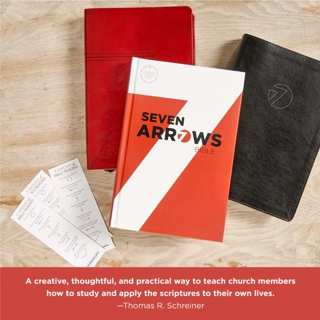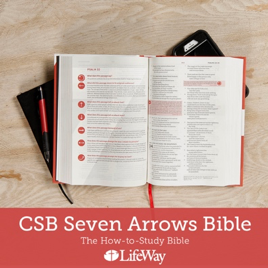Ten years ago, I sat in an IHOP parking lot drawing on a napkin. A young man named Tim recently came to faith in Jesus and I was meeting with him to read the Bible together. Tim was hungry to learn more about God’s Word—as you might expect for a new believer. He was reading daily and asking great questions about the Bible. I knew that my job was more than simply helping him work through his questions. I wanted to train him for a lifetime of Bible reading. That day I sketched out a few simple arrows with corresponding questions that I hoped would provide a simple roadmap for Tim. The questions weren’t unique, but my goal was to provide a sticky, memorable framework that would aid the “Tims” of the world in discerning God’s intended meaning from any biblical text.
Fast forward a decade and, by God’s grace, those Arrows have seemingly been helpful to more than just Tim and our church in Greenville, South Carolina. I never set out to write books or teach conferences on the Arrows, much less to create a study Bible, but it seems that God had other plans. My friends at Lifeway were kind enough to allow me and my friend and fellow pastor, Donny Mathis, to build out this framework in a Bible that is intended to be a “How To” guide for Bible readers, particularly for students ranging from middle school through college. For this reason, the Seven Arrows Bible is built differently than most study Bibles.

In the introductory material, we provide a unifying thesis for the Bible and attempt to show students how the Bible is one story telling of God’s plan to save sinners and fix the world through Jesus Christ. From there, we break up the story into nine movements, or chapters, with each demonstrating the progression of the Bible from Genesis to Revelation. The reading plan at the outset of the Bible provides a systematic way for students to read through these movements over the course of a year using the Seven Arrows as a guide.
Then we’ve selected several hundred key passages in Scripture and provided journal reflections on the questions asked by the Arrows so that Bible readers have a model for how to use them to guide their reading. In addition, there are over a thousand places in the Bible where we’ve isolated a single arrow and demonstrated how the question posed by that arrow can be answered from the text itself.

The journey of building this Bible has proven rewarding, not merely as a pastor but also as a father of five. I long to see my kids understand and love God’s Word and desire to equip other parents in my church to lead out in discipleship in the home. The Seven Arrows Bible is a welcomed addition to that process because it can help the insecure parent know how to build a simple framework for family devotions and Bible reading at the breakfast table.
I’m certain that you, like me, are inundated with resources and our aim isn’t to add to the books or tools that sit on each of our shelves. However, we do believe that this Bible has a unique bent that could make it useful in your church’s discipleship strategy.
Here are a few ways you can learn more and help us out:
- Check out a little video promo that I put together for the Bible: https://vimeo.com/327156323/4b63e0e0fe
- Review the Sampler document that gives you a sense of the scope and plan for the Bible: Sampler document here: https://docs.wixstatic.com/ugd/9956bb_f2a581058a194fb5b11a13677b5bf8f1.pdf
- Use the Bible or the Arrows method to disciple Bible readers in your ministry context. You can see more of the resources we’ve developed at sevenarrowsbible.com;
- Check out the Seven Arrows Devotional which is designed to serve as a supplement to the Bible by providing a 52-week roadmap for students to work through the main movements of the redemptive metanarrative;
- Order a stack of bookmarks for use discipling church to read the Bible well. We’ve had a number of missionaries around the world put these in play so you’ll find an assortment of languages available.
- Consider using the Bible in your student ministry or as a gift for high school or college graduates;
- Point others to the Bible via social media or personal recommendations.

Written by Dr. Matt Rogers. Matt is a professor at SEBTS, a church planter, and an author, currently living in Greenville, SC with his family.

